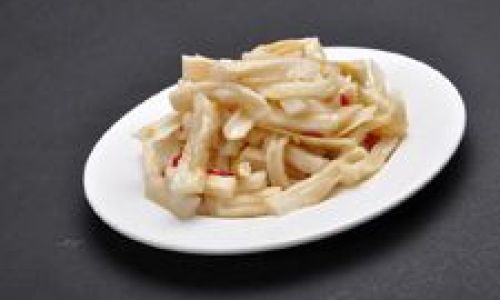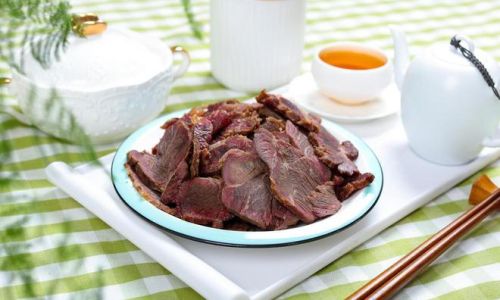Introduction
Dried radish, often referred to as dried daikon or preserved radish in various culinary traditions, is a versatile and flavorful ingredient that has been cherished for centuries across Asia and beyond. This humble yet robust food item is made by dehydrating fresh radish slices, a process that intensifies its natural sweetness and creates a unique texture that’s both crunchy and chewy. From being a simple snack to a complex flavor enhancer in elaborate dishes, dried radish offers a world of culinary possibilities. In this comprehensive guide, we will explore the intricacies of how to eat dried radish, from preparation techniques to innovative recipe ideas, ensuring that you unlock its full potential in your kitchen.

Understanding Dried Radish
Before diving into the various ways to enjoy dried radish, it’s essential to understand its basic characteristics. Dried radish is typically made from the large, white variety of radish known as daikon. This root vegetable is high in vitamins, minerals, and dietary fiber, making it a nutritious addition to any diet. The dehydration process浓缩了its flavors, transforming a mild, somewhat pungent fresh vegetable into a concentrated burst of umami and sweetness.
Dried radish can come in various forms, including slices, shreds, and even powders. Each type offers unique textures and uses in cooking. Slices are often used for snacking or as a topping, while shreds and powders are more suited for blending into dishes to add depth of flavor.
Preparation Techniques
-
Rehydration
One of the most fundamental steps in preparing dried radish for cooking is rehydration. This can be done by soaking the dried slices or shreds in water for a few hours or overnight, depending on the desired texture. Soaking not only softens the radish but also helps to release its concentrated flavors. For a quicker method, you can use hot water, which will speed up the process but may slightly alter the texture. -
Rinsing and Draining
After soaking, it’s crucial to rinse the dried radish thoroughly to remove any excess salt or preservatives used during the drying process. Drain well using a colander or cheesecloth to ensure that no excess water remains, as this could affect the final dish’s consistency.
-
Seasoning and Flavoring
Dried radish has a naturally strong flavor profile that pairs well with a variety of seasonings. Simple additions like soy sauce, sesame oil, garlic, and chili can elevate its taste. For a more complex flavor profile, consider incorporating ingredients like ginger, five-spice powder, or even a splash of rice vinegar.
Cooking with Dried Radish
Now that we’ve covered the basics of preparation, let’s delve into some creative cooking ideas that showcase the versatility of dried radish.
-
Appetizers and Snacks
- Dried Radish Chips: For a healthy snack alternative, simply rehydrate your dried radish slices slightly, pat them dry, and then bake or air-fry until crispy. Season with sea salt, a sprinkle of chili flakes, and a drizzle of sesame oil for a delicious treat.
- Pickled Dried Radish: Add a tangy twist by pickling your rehydrated radish slices in a vinegar-based brine with garlic, ginger, and sugar. Allow them to marinate for a few hours or overnight before serving as a refreshing appetizer.
-
Salads and Side Dishes
- Dried Radish and Vegetable Salad: Combine rehydrated and drained radish slices with fresh vegetables like cucumber, carrot, and bell pepper. Toss with a light dressing made of rice vinegar, sesame oil, soy sauce, and a touch of honey for sweetness.
- Stir-Fried Dried Radish with Pork: For a hearty side dish, stir-fry slices of pork belly or shoulder with rehydrated radish, garlic, and ginger. Add a splash of soy sauce and a dash of oyster sauce for richness, and serve over a bed of steamed rice.
-
Soups and Stews

- Dried Radish and Pork Rib Soup: This classic Asian soup combines the umami-rich flavors of dried radish with tender pork ribs. Simmer the ingredients together with water, ginger, and green onions for hours until the broth is deeply flavored and the meat is falling off the bone.
- Vegetarian Dried Radish Stew: For a vegetarian option, create a hearty stew using rehydrated radish, potatoes, carrots, and lentils. Season with vegetable broth, tomatoes, and aromatic spices like cumin and coriander for a flavorful, nutritious meal.
-
Main Courses
- Dried Radish and Tofu Stir-Fry: For a plant-based main course, stir-fry firm tofu with rehydrated radish slices, bell peppers, and scallions. Use a sauce made from soy sauce, hoisin sauce, and a touch of maple syrup for sweetness and balance.
- Dried Radish and Chicken Curry: Incorporate rehydrated radish into a mild or spicy curry with chicken thighs, potatoes, and coconut milk. The radish will absorb the curry’s flavors, adding layers of complexity to the dish.
-
Condiments and Seasonings
- Dried Radish Relish: Blend rehydrated and finely chopped radish with garlic, ginger, chili, and vinegar to create a tangy, spicy relish that pairs well with grilled meats, seafood, or even sandwiches.
- Dried Radish Powder: Grind dried radish slices into a fine powder using a food processor. This versatile seasoning can be used to enhance the flavor of soups, stir-fries, and even baked goods, adding a subtle umami note.
Conclusion
Dried radish is a culinary treasure trove that offers a myriad of ways to enhance your meals. From being a simple snack to a complex flavor component in elaborate dishes, its versatility and nutritional benefits make it a must-have ingredient in any kitchen. By mastering the art of preparation and experimentation with various cooking techniques, you can unlock the full potential of dried radish, transforming it into a culinary delight that will delight your taste buds and nourish your body.
As you embark on your journey of exploring how to eat dried radish, remember that the key to success lies in understanding its unique characteristics and how they interact with other ingredients. With patience, creativity, and a willingness to experiment, you’ll soon discover that dried radish is more than just a preserved vegetable; it’s a culinary adventure waiting to unfold. Happy cooking!





0 comments